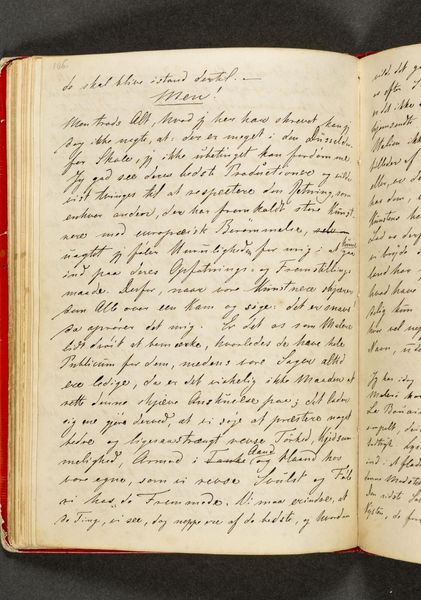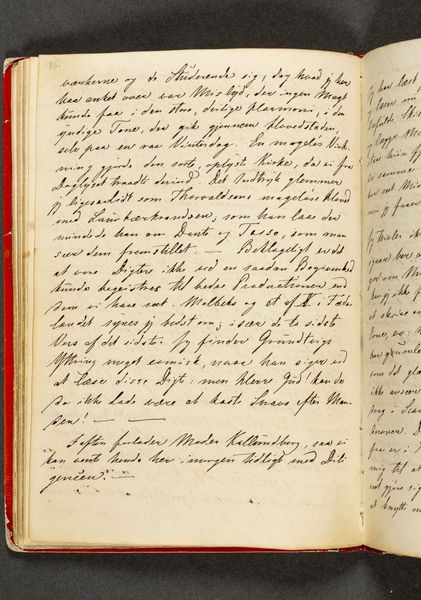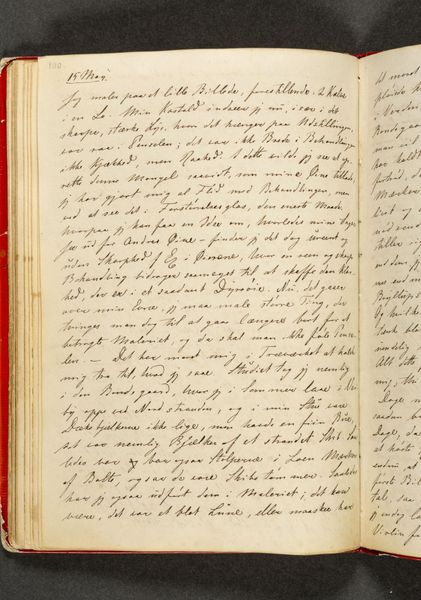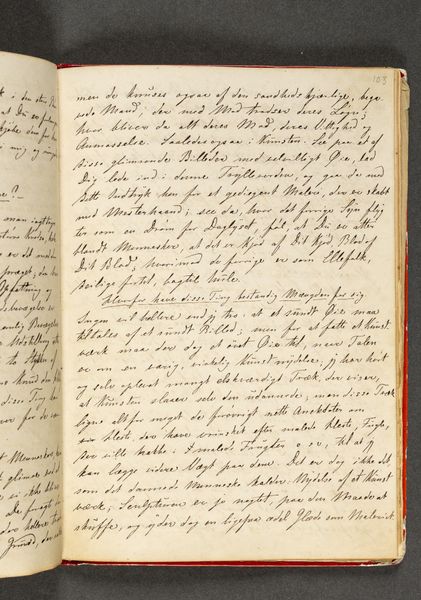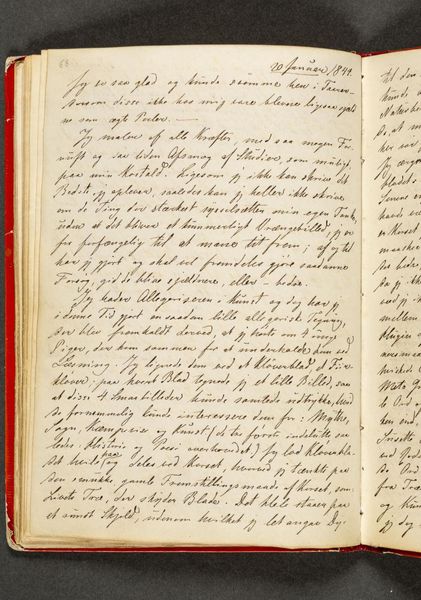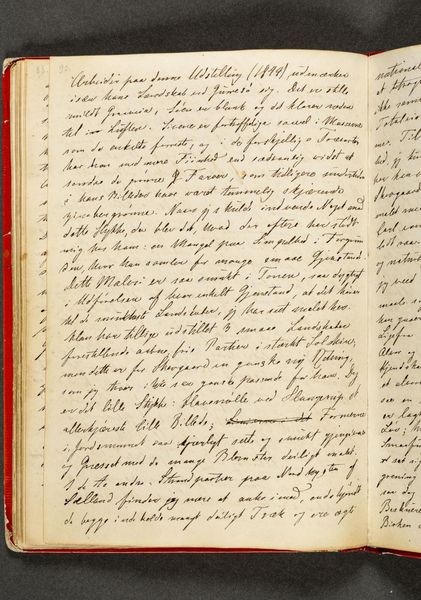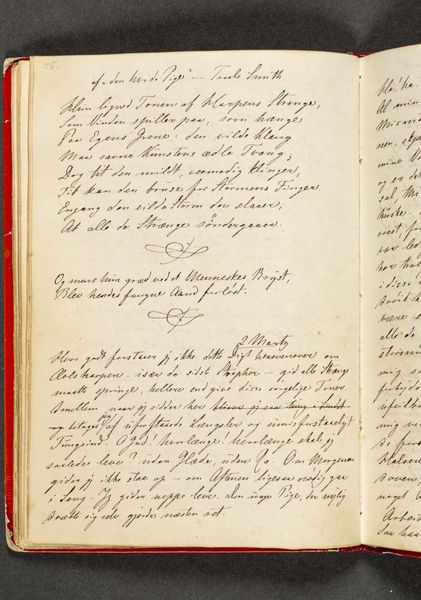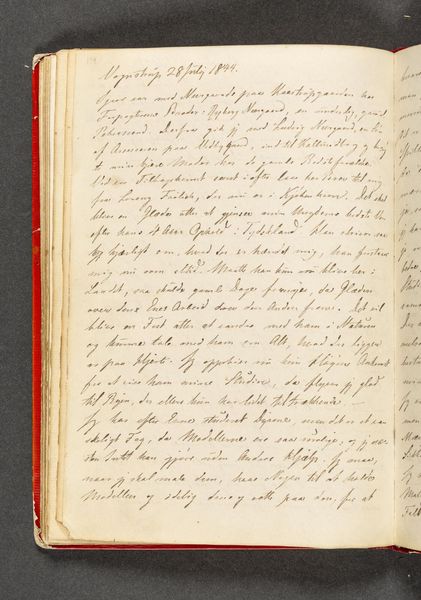
drawing, paper, ink
#
drawing
#
paper
#
ink
#
romanticism
Dimensions: 192 mm (height) x 133 mm (width) (bladmaal)
Curator: So, here we have a peek into the past: "Dagbog. Side 102," or "Diary. Page 102," created in 1844 by Johan Thomas Lundbye. It’s an ink drawing on paper held at the SMK in Copenhagen. My initial reaction? Intimate. It feels like stumbling across a hidden corner of someone's mind. Editor: It absolutely feels like eavesdropping! The density of the script, the way the lines just keep going, unbroken…it's like a relentless flow of thought poured directly onto the page. Are we even meant to understand it? It seems almost…sacred, in its privacy. Curator: In a sense, we aren’t *meant* to, are we? Yet, this is Romanticism at its most introspective. Lundbye, better known for his landscape paintings, offers us raw, unfiltered emotion here. I can sense a kind of struggle, a striving to articulate feelings perhaps too complex for visual rendering. Notice how compact and consistent his handwriting is. It's as if no empty space can be permitted on the page. Editor: Exactly! The handwriting becomes like another layer, adding another set of meanings. There is a tension. Looking at the words gives an illusion of content; maybe some people will recognize phrases from the period... but its significance really resides in how the words work together. Like intricate code carrying burdens of thought. It hints at deeper cultural contexts that may be obscured now. Curator: And diaries are intriguing. How can Lundbye even decide what or what not to record? There had to be many drafts of what eventually got recorded on paper. As you were alluding to before, he's definitely writing something down that is not intended for other people to read, or see. Editor: Well, consider diaries as symbolic artifacts. It serves as proof to himself, a monument he could create and present evidence that he had something to say about life and how he could process it, in a way that might only make sense to him at this period. We will never know if the diary, after his death, was released with specific intent, which adds another symbolic layer. The romantic era could certainly get self-indulgent! Curator: Well put. Perhaps this page reminds us of our shared inner landscapes—the messy, beautiful, and often illegible terrains of our own thoughts and feelings. Lundbye managed to capture something deeply human, here. Editor: Precisely. It encourages us to embrace that sense of our inner landscape and mystery in ourselves, and maybe look inward to those private spaces where symbols speak volumes and truths are whispered.
Comments
No comments
Be the first to comment and join the conversation on the ultimate creative platform.



